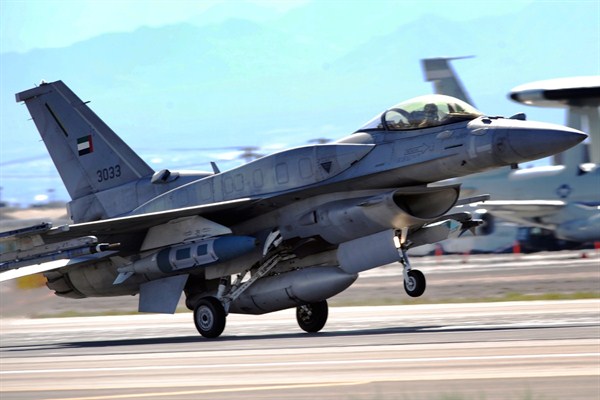At first glance, the United Arab Emirates might look like it is Saudi Arabia’s wingman when it comes to regional security. After all, the UAE has joined Saudi Arabia in a number of regional ventures in recent years. Together, they intervened to stabilize the monarchy in Bahrain after popular protests erupted in 2011, and have spent billions of dollars backing Egyptian President Abdel Fattah el-Sisi’s government since 2013. Most recently, the UAE joined the ongoing Saudi coalition intervening against the Houthis in Yemen.
But appearances are deceiving. Despite having joined these Saudi-led initiatives around the Middle East since the start of the Arab Spring, the UAE is not a mere satellite of Saudi Arabia, acting at Riyadh’s command. Rather, they share common political and security interests—particularly when it comes to threats they perceive from Iran and Islamist groups. So it’s not surprising to see Riyadh and Abu Dhabi working together to support el-Sisi in Egypt or suppress Iranian-backed Houthi rebels in Yemen.
One explanation for the UAE’s more assertive foreign policy over the past few years is its outsized military muscle, in particular airpower. The UAE possesses one of the region’s most potent air forces, flying more than 60 advanced versions of the American-built F-16 fighter jet, in addition to a similar number of French-built Mirage 2000 fighters. Since 2011, the Emirati air force has participated in NATO operations against Moammar Gadhafi’s regime in Libya, the U.S.-led campaign against the self-declared Islamic State (IS) in Syria and the Saudi-led coalition in Yemen.

